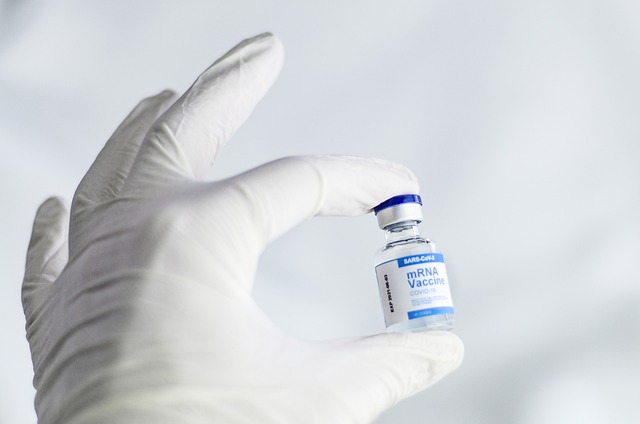Termite infestations cause severe structural damage if untreated. Fast termite treatment offers a swift solution by targeting and eliminating termites quickly to prevent extensive repairs. Professionals use pesticides or heat treatments to destroy colonies promptly, saving homes from potential devastation. Early infestation detection through signs like sawdust, discolored wood, or unusual smells is crucial. Traditional treatments involve hazardous chemicals and extensive preparation, while fast solutions use advanced technologies and eco-friendly products for time and cost savings. After treatment, regular inspections and maintenance are vital to prevent future infestations.
Struggling with termites? Fast termite treatment offers a swift and effective solution for infestations. This comprehensive guide explores understanding fast termite control, recognizing signs early, common species’ behaviors, traditional vs. modern methods, and the advantages of rapid eradication. Learn about the step-by-step process, preventative measures, and secure your home post-treatment. Discover why this method is a game-changer for efficient, cost-effective termite management.
Understanding Fast Termite Treatment: A Quick Fix for Infestations

Understanding Fast Termite Treatment: A Quick Fix for Infestations
Termite infestations can be a serious problem for homeowners, causing significant structural damage if left untreated. However, fast termite treatment offers a prompt solution to mitigate these risks. This method involves targeted and aggressive measures to eliminate termites quickly and effectively. It’s a game-changer when dealing with infestations in their early stages, as it can prevent extensive and costly repairs.
Professionals employ various techniques for fast termite treatment, such as using powerful pesticides or employing heat treatments to destroy the termite colony. The key advantage lies in its swiftness; by acting swiftly, homeowners can save their properties from potential devastation. This method ensures that the termites and their nests are eradicated promptly, providing a lasting solution to keep homes safe.
Identifying Signs: Recognizing a Termite Infestation Early

Recognizing a termite infestation early is crucial for effective termite treatment. Keep an eye out for subtle signs such as small piles of sawdust, which termites produce as they digest wood. You might also notice discolored or damaged wood structures in your home, like floors, walls, or furniture, indicating the presence of these pests. Termites often leave behind weak or hollowed-out areas, making it easy to identify infested sections with a simple tap test—if it sounds hollow, it could be a sign of termite activity.
Regular inspections are key to catching an infestation early. Check for any unusual smells or musty odors, as termites create these as they feed on wood. Look for tiny holes in wooden elements and keep an eye out for live termites or their shed skins, which can indicate an active infestation. Remember, the earlier you identify a termite problem, the faster you can act to protect your property with appropriate termite treatment methods.
Common Termite Species and Their Behavior Patterns

Termite Treatment is a complex process, and understanding common termite species and their behavior patterns is essential for effective management. Among the most prevalent are Subterranean termites, known for their colony structure and ability to build elaborate tunnel systems underground. They feed on cellulose-rich materials, making wooden structures particularly vulnerable. Another common species is the Formosan termite, which has a more aggressive colony expansion strategy and can cause significant structural damage.
Unlike Subterranean termites that nest primarily below ground, Drywood termites inhabit wood above ground level, often in older buildings. They create small entry points to access wooden members and form colonies within the wood itself. Termite behavior varies by species, but all share a communal lifestyle where workers forage for food, soldiers defend the colony, and reproductives (kings and queens) reproduce and lead the colony’s growth. Recognizing these patterns can help in identifying infestations early, crucial for successful termite treatment.
Traditional vs. Fast Termite Treatment Methods

Traditional termite treatment methods often involve extensive preparation, including the use of chemicals that can be hazardous and time-consuming to apply. These techniques might require evacuating affected areas for extended periods and can leave behind residual chemicals. In contrast, fast termite treatment offers a more modern and swift solution. It employs advanced technologies and eco-friendly products, minimizing chemical exposure and reducing downtime.
The speed of these treatments is a significant advantage, as it allows for quicker restoration and less disruption to daily life and activities. Fast termite solutions can target the infestation directly with precision, eliminating the need for extensive preparation or post-treatment waiting periods. This method is ideal for those seeking an efficient, effective, and environmentally conscious approach to termite control.
Advantages of Rapid Termite Control: Time-Saving, Cost-Effective Solutions

Rapid termite control offers several advantages over traditional methods. One of the most significant benefits is time-saving. With fast-acting treatments, you can expect quicker results, allowing you to regain control of your property without extensive delays. This efficiency also translates to cost savings since less time spent on treatment means reduced labor costs.
Additionally, these solutions are designed to be effective and economical. Modern termite treatment options often involve advanced technologies and targeted applications, ensuring minimal environmental impact while effectively eliminating termite infestations. By choosing rapid termite control, property owners can benefit from swift pest management without breaking the bank.
The Process: Steps Involved in Fast Termite Eradication

The process of fast termite eradication involves several crucial steps designed to swiftly and effectively eliminate these pesky insects from your property. Firstly, a detailed inspection is conducted to identify the extent of the infestation and pinpoint the species responsible. This critical phase helps tailor the subsequent treatment methods precisely.
Next, based on the inspection findings, professionals employ targeted applications of termiticides – powerful chemicals designed to disrupt termite colonies. These can be delivered through various means, such as liquid treatments or baits, strategically placed around affected areas. Throughout the process, ongoing monitoring is essential to ensure the treatment’s effectiveness and make adjustments as needed. This might involve periodic inspections and reapplication of treatments until the termites are completely eradicated.
Preventative Measures: Securing Your Home Post-Treatment

After receiving your fast termite treatment, securing your home is paramount. This involves several preventative measures that should be taken post-treatment to ensure the long-term protection of your property. Start by inspecting your home regularly for any signs of termite activity. Check for mud tubes, which termites create to travel between their nest and food source, as well as any unusual damage or gaps in wood structures.
Keep your home clean and free of clutter, especially areas with moisture issues. Termites are attracted to sources of water, so promptly fixing leaks and ensuring proper drainage around your foundation can deter them from entering your home. Additionally, maintain a buffer zone between your property and any nearby vegetation by trimming trees and shrubs away from walls and foundations. Regular maintenance and vigilance are key in preventing future termite infestations.
